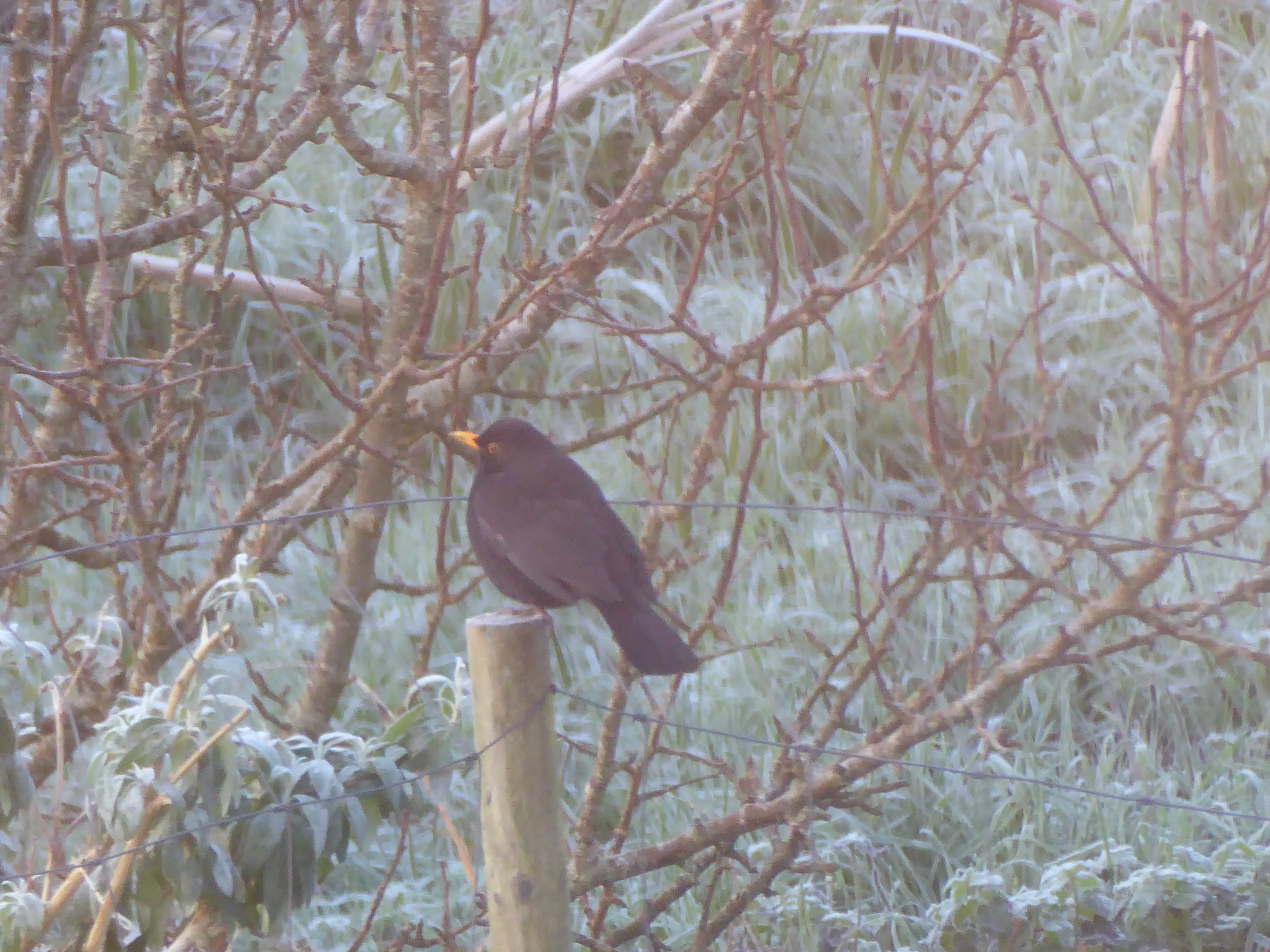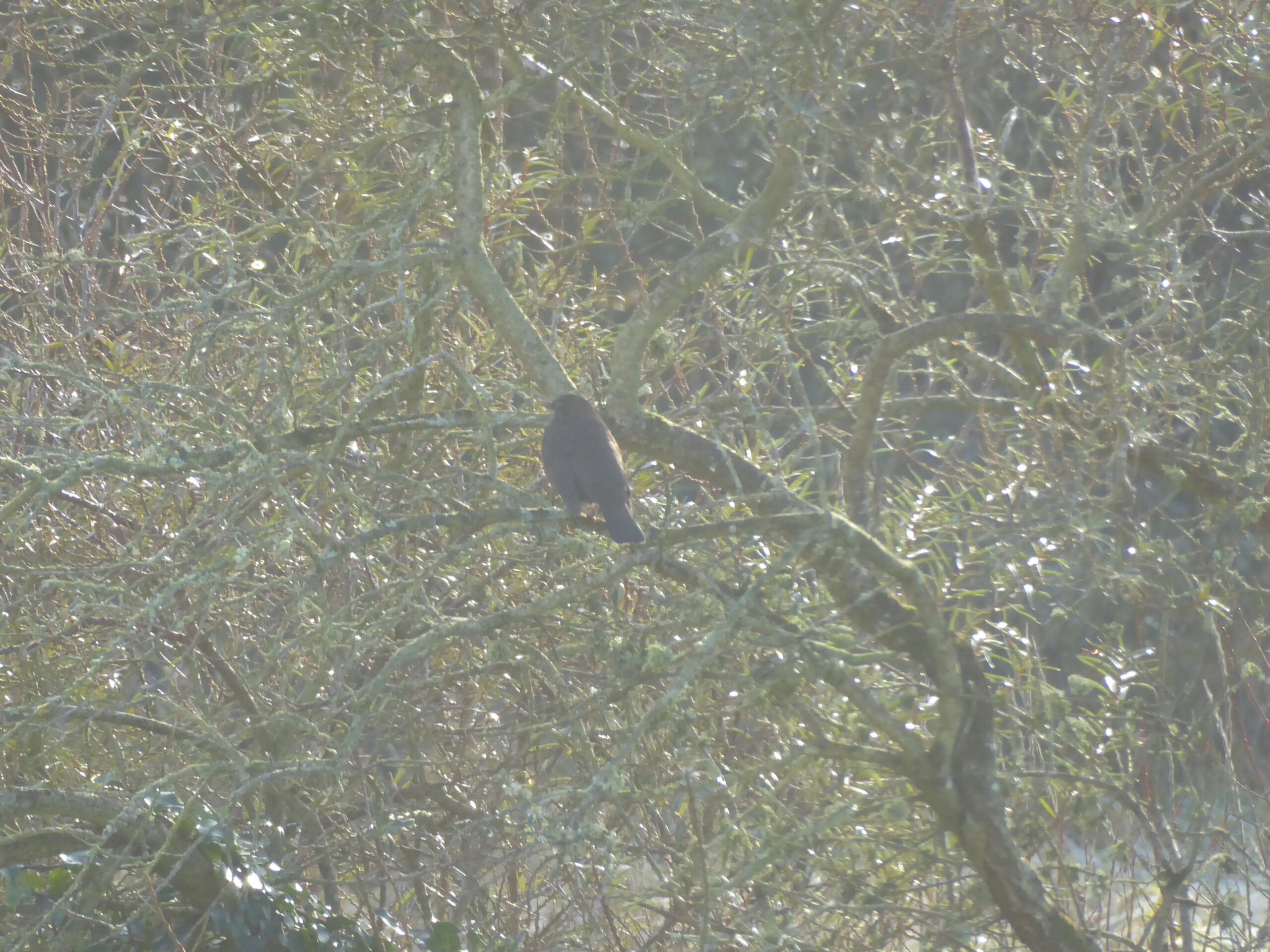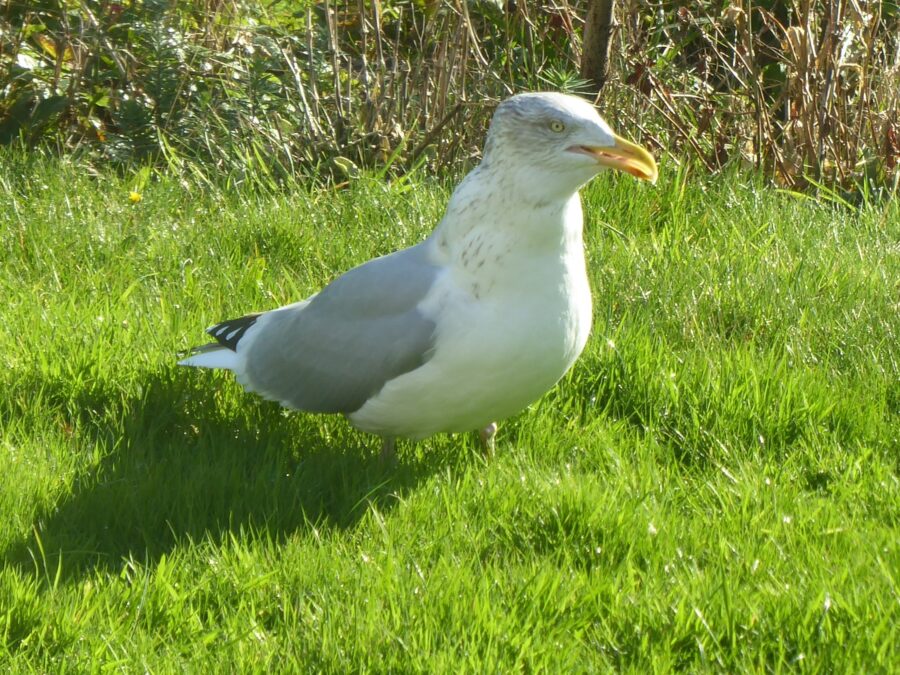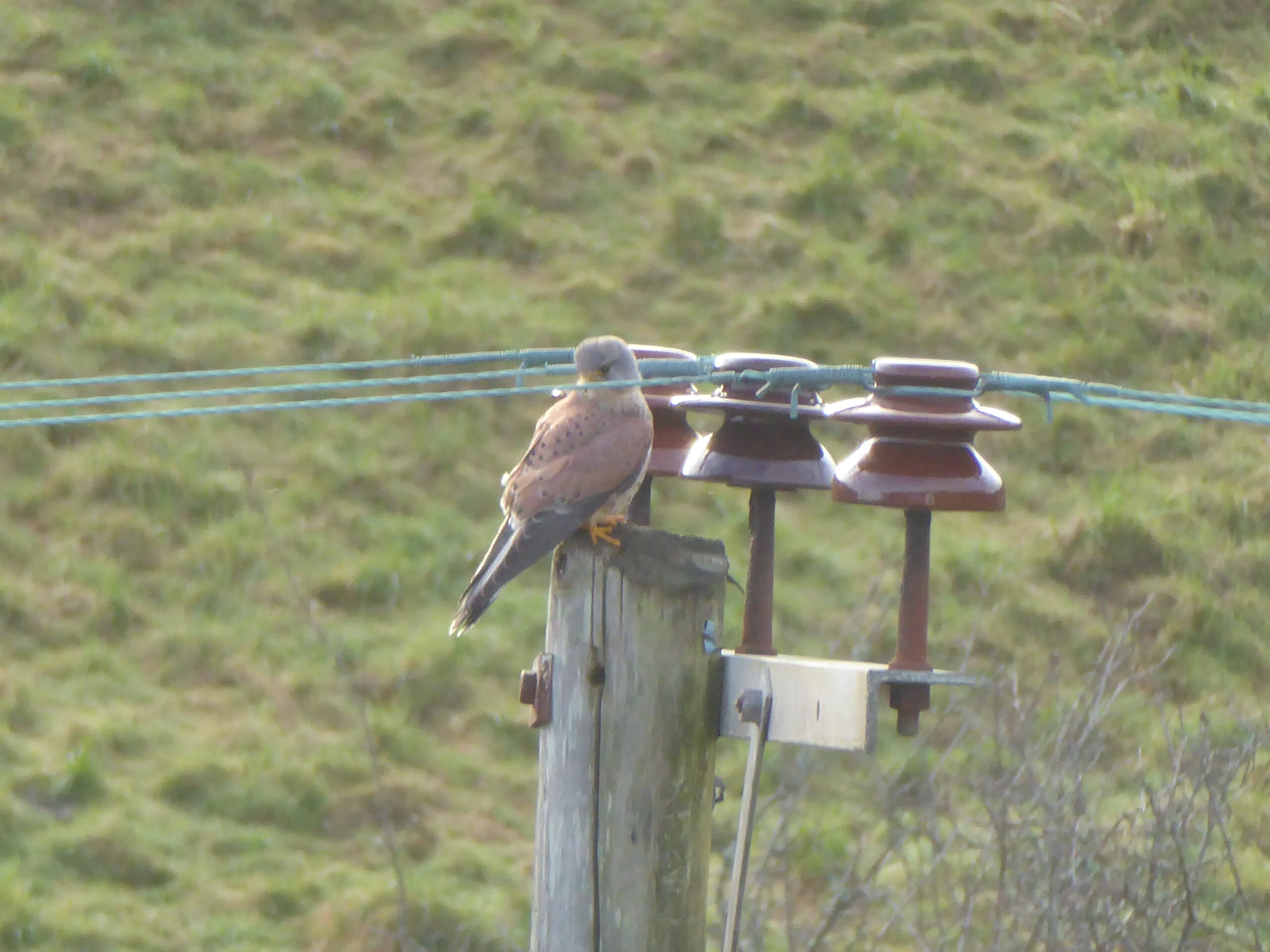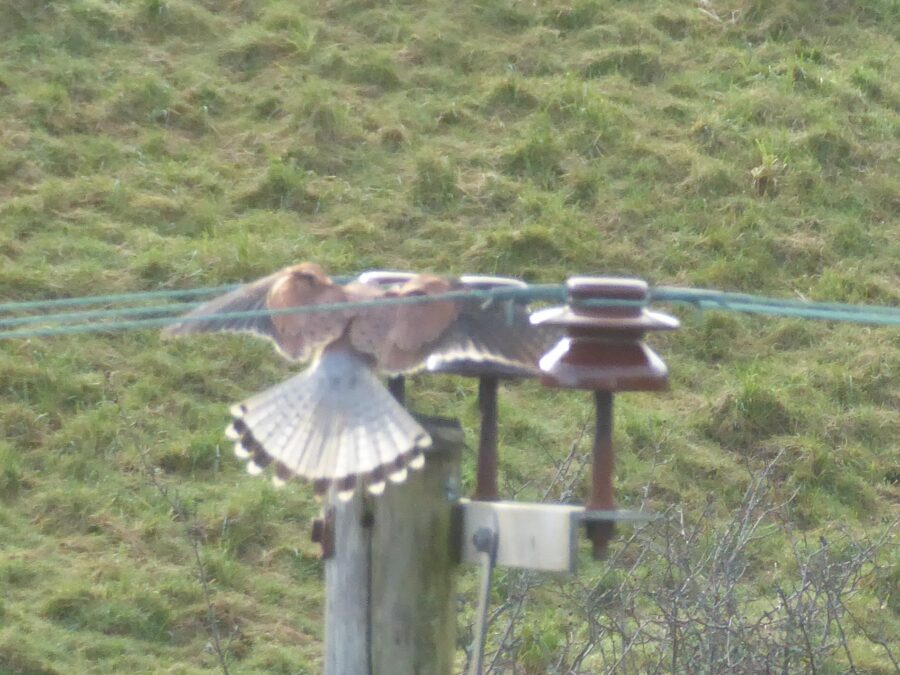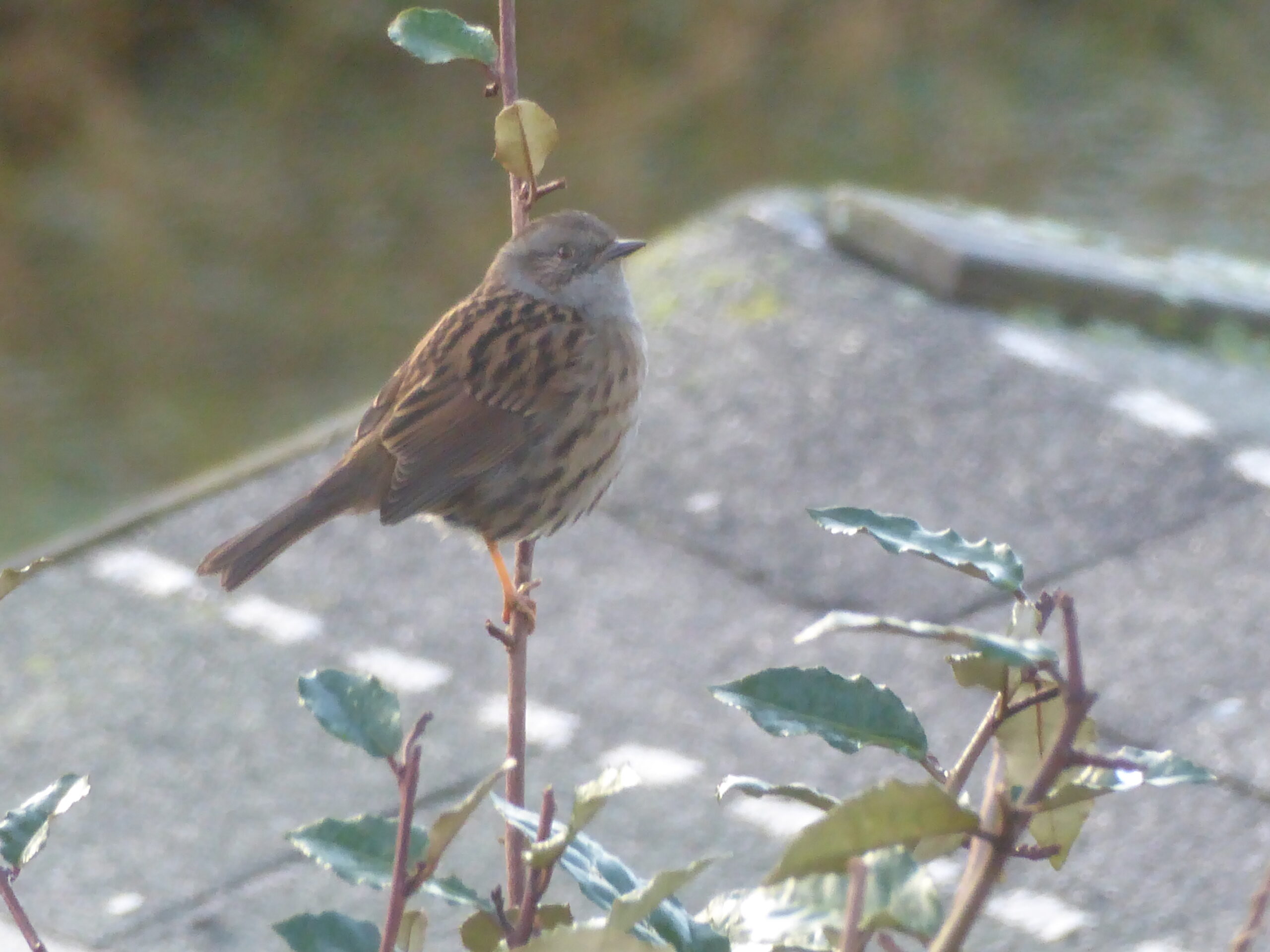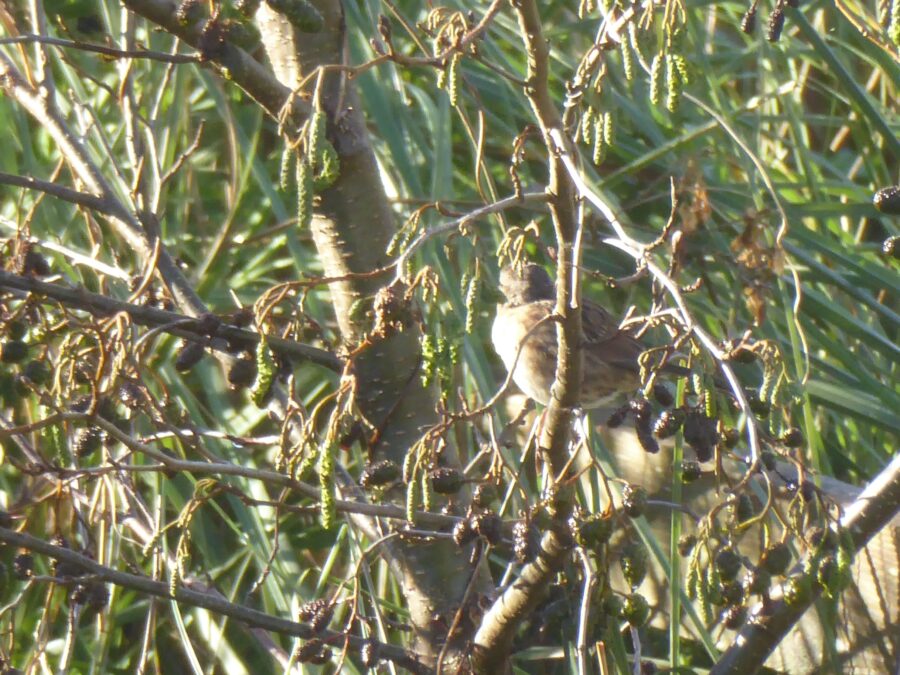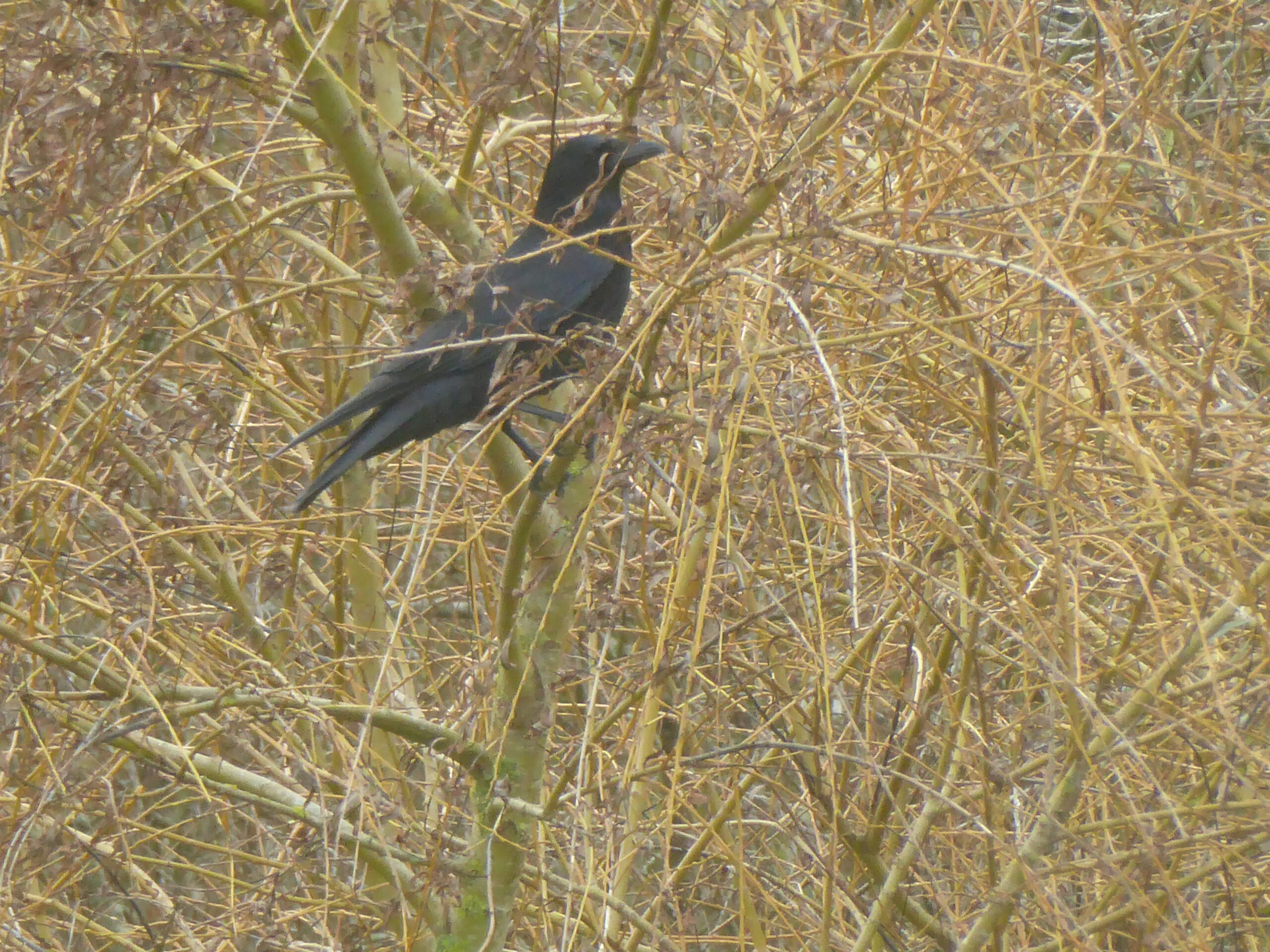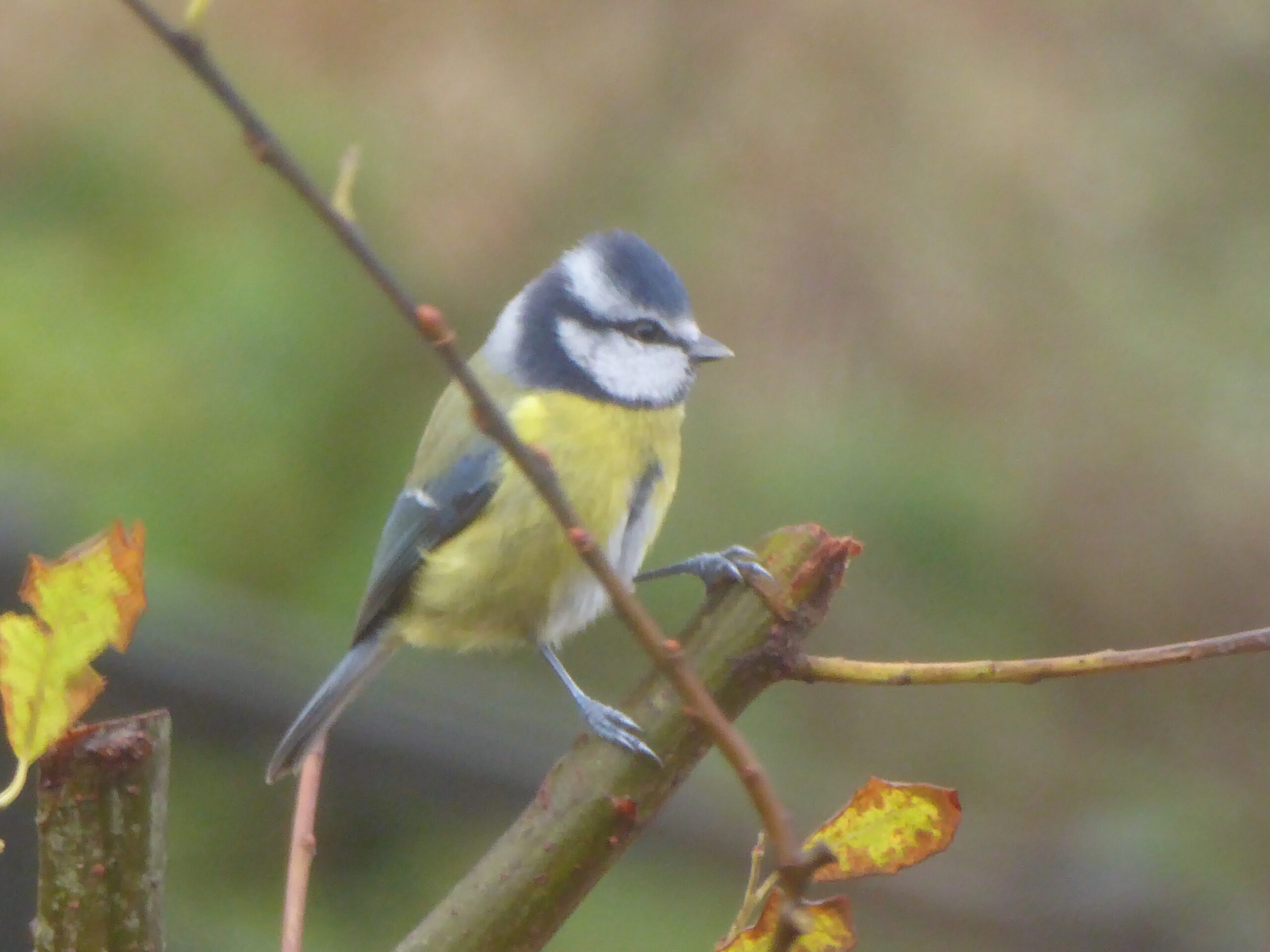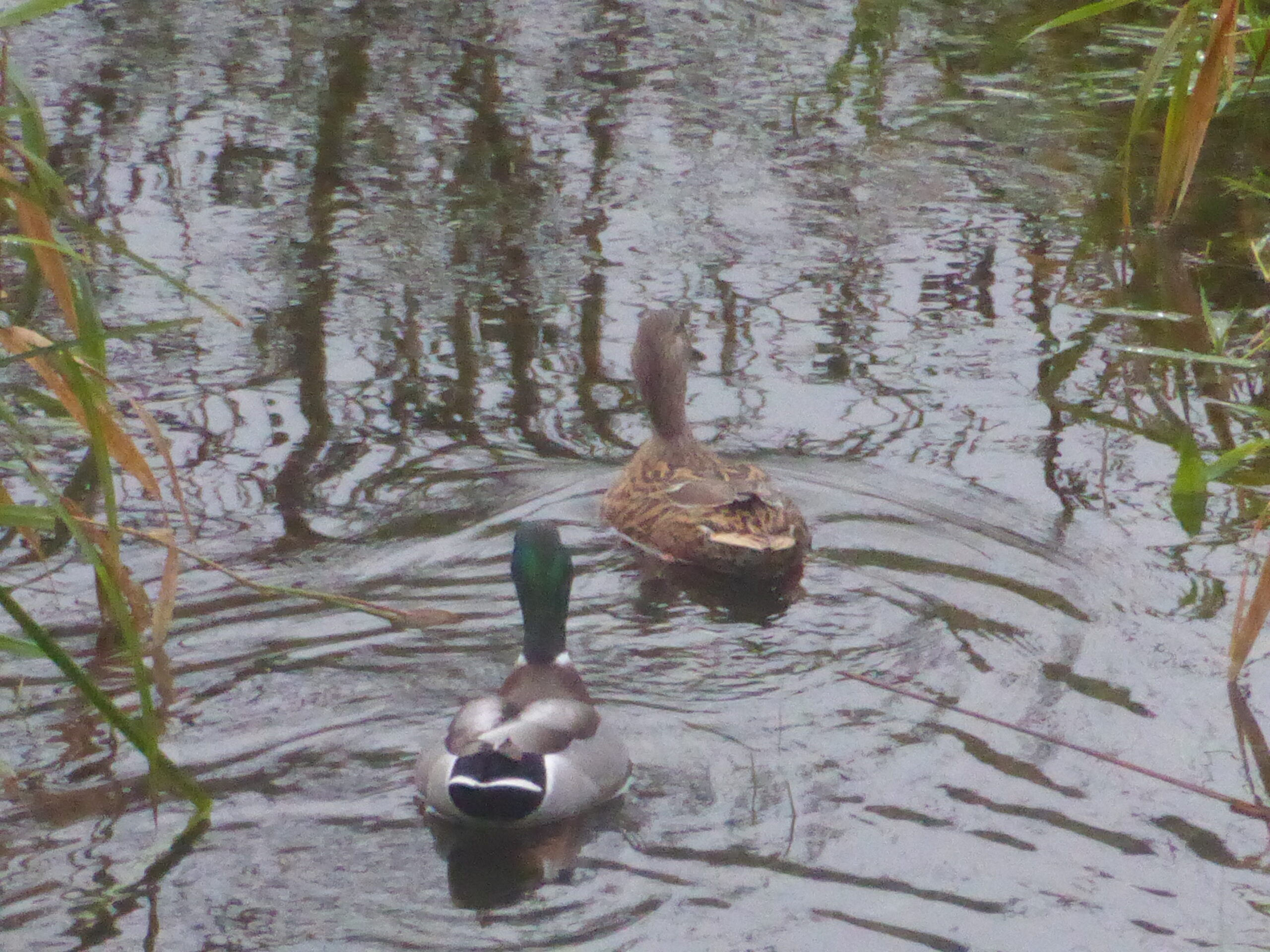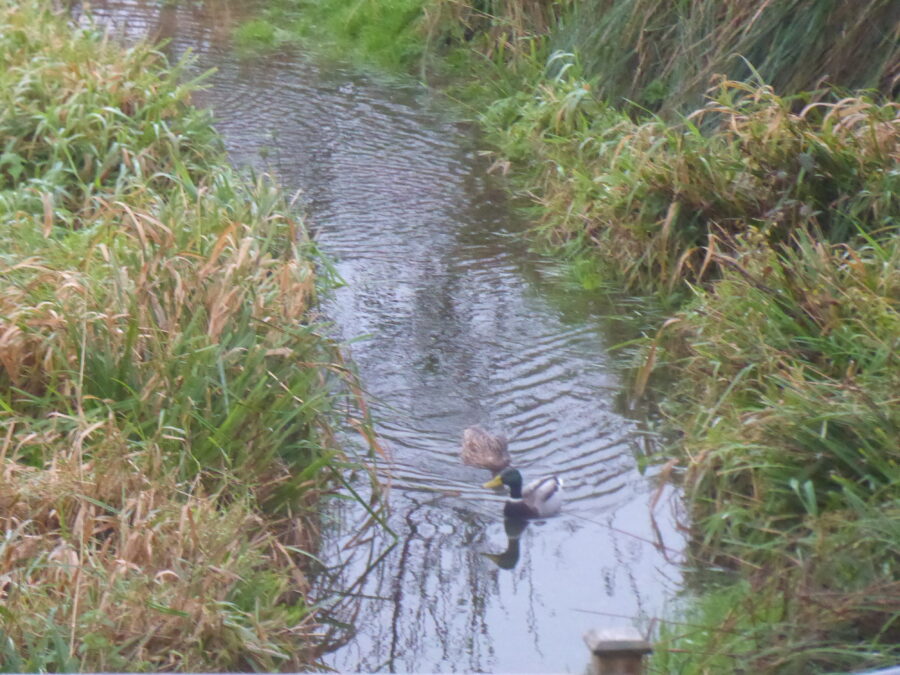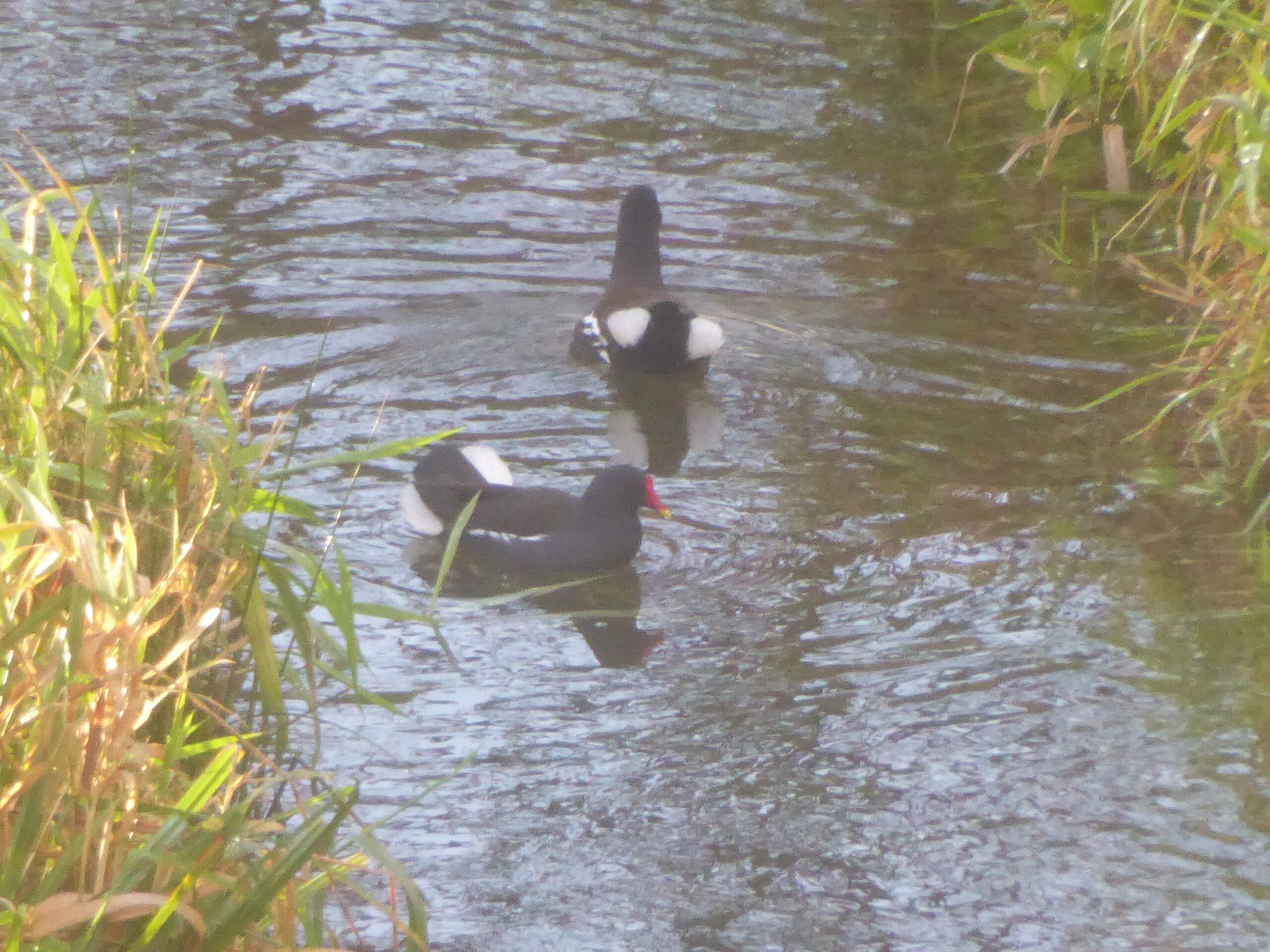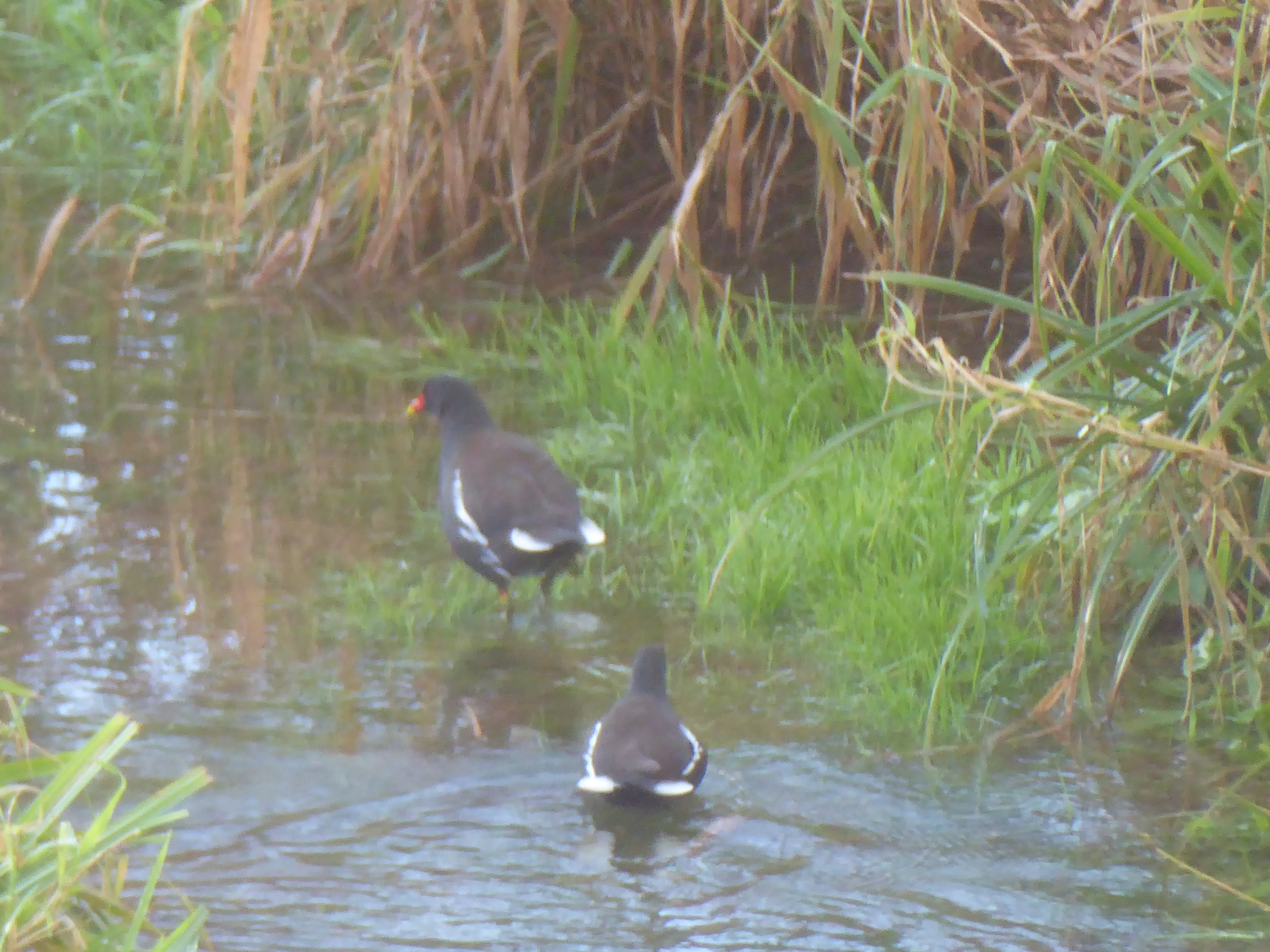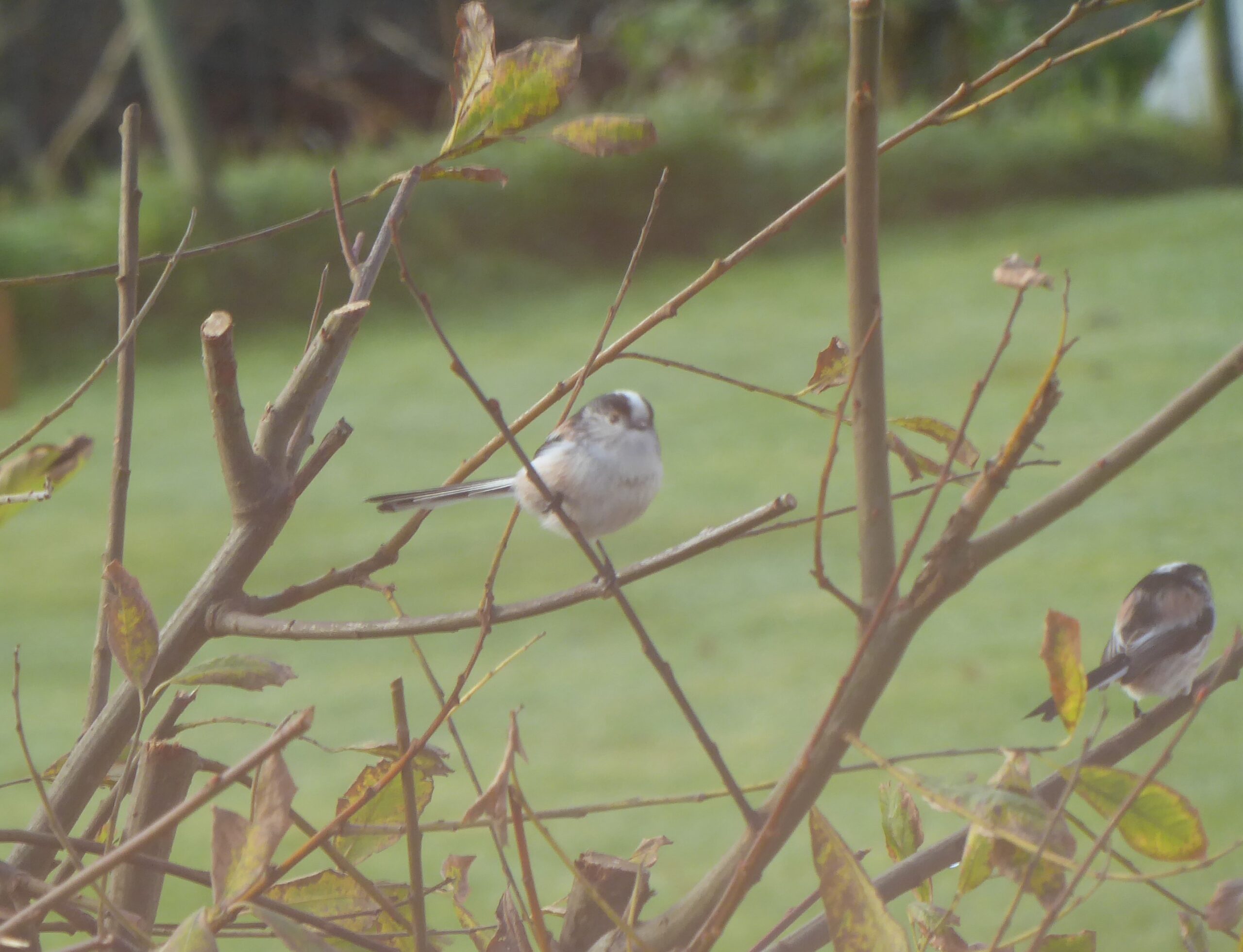A female blackbird regularly nests in neighbouring trees. A couple of years ago, she made a nest in some pampas grass that used to be on our bank (Vole County). That particular nest got predated, just before the chicks were due to fledge. The female was very verbal and anxious all through the nesting season, which was hardly surprising given what happened. We think she made about three nests that year.
In fact, we haven’t seen any blackbirds for a few months, so I was particularly pleased to see this one in the sea buckthorn. It’s dark, but faintly mottled (if you zoom in) and its beak is quite a dark yellow, so I think it might be a female. Juveniles in their first winter can be mistaken for females as they have dark beaks. The yellow starts appearing after January.
So where have the blackbirds been lately? And where do they go in the winter?
In the late summer, they moult. After a summer of dragging themselves in and out of bushes to raise their chicks, they are looking very ragged. While they are moulting, they are not so agile on the wing, and are, therefore, more vulnerable to predators. This means they have to go into hiding to keep safe until their plumage is restored.
During September and October, there is an abundance of berries for them to feast on, especially blackberries and hawthorn berries. So, they spend time foraging deep in the countryside, which probably doesn’t include our watermeadow, as we only have the sea buckthorn berries for them here.
Garden blackbirds return in the winter, often accompanied by friends from Scandinavia, or more northerly UK regions, because it turns out that blackbirds, like robins, are partially migratory, heading a little bit south in the winter. So, actually, your winter blackbirds, might not be the same ones you see in your garden during the summer.
